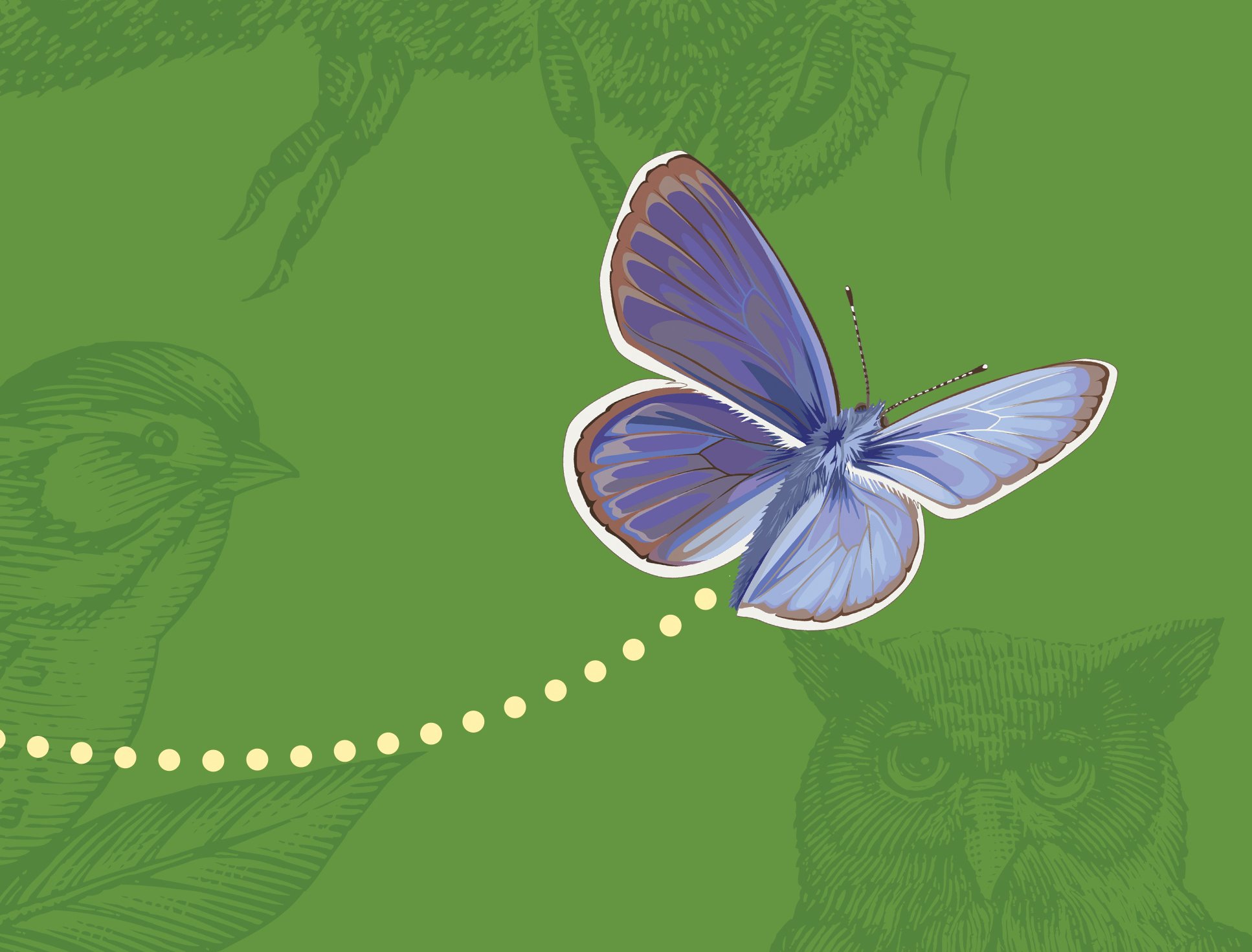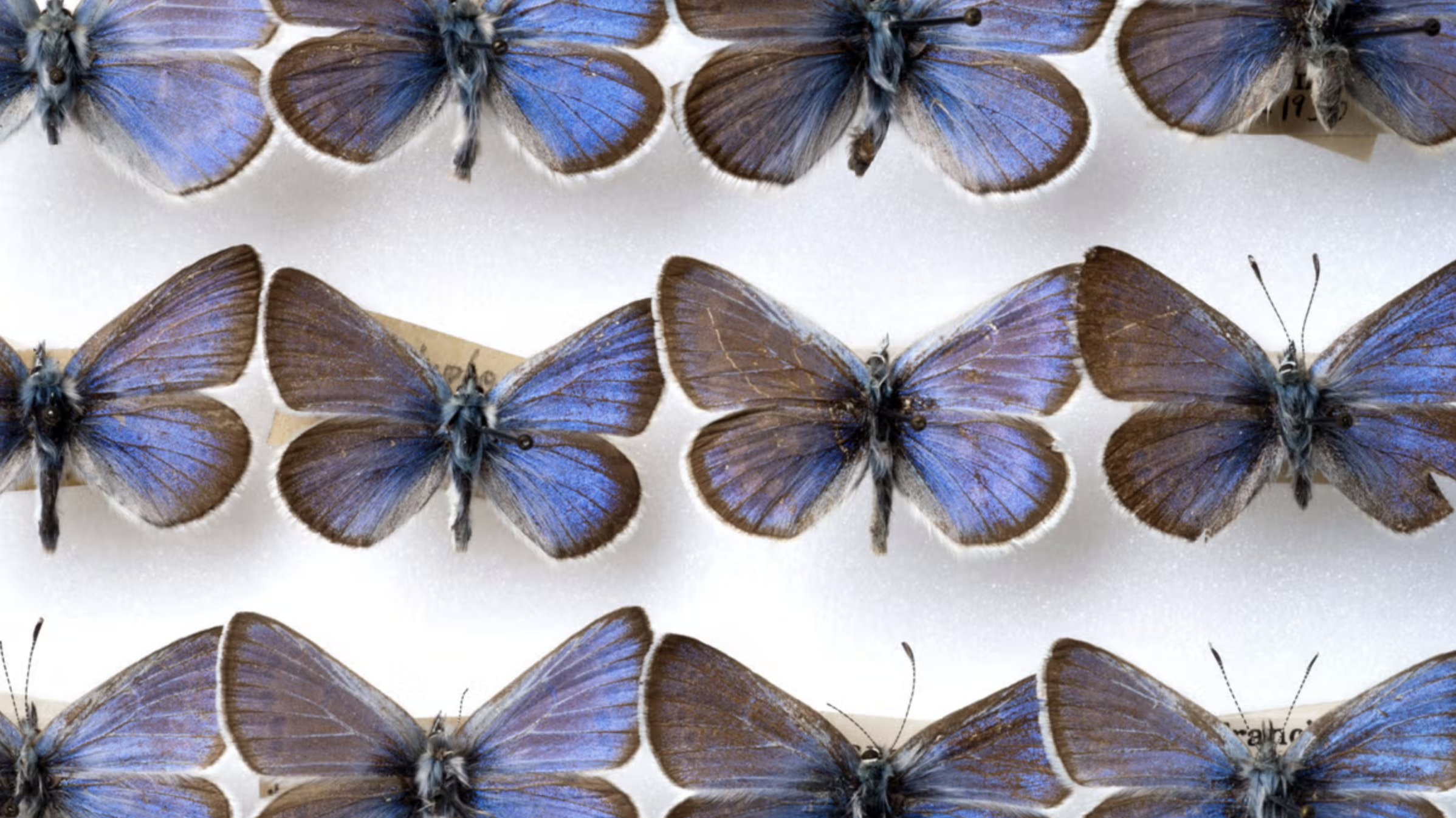
Find your path to a more biodiverse city
You are invited to learn about and explore biodiversity in San Francisco with Nature in the City and our partners!
Find your path to making San Francisco more biodiverse and connect with your community in positive and healthy ways! To help celebrate Nature in the City’s 20th anniversary, we launched a biodiversity campaign on MUNI buses and trains.
Below you’ll find ways to engage, fun facts about biodiversity, and an interesting story of regeneration for the Xerces Blue butterfly, which went extinct in San Francisco in the early 1940’s.
-

Attend an Event
You can join a nature walk or volunteer day to learn about and help care for habitats and urban wildlife in San Francisco! Be empowered stewards and scientists as you enjoy beautiful and biodiverse landscapes.
-

Observe Nature
As a community scientist, you can play an important role in recording biodiversity. Visit our habitat restoration sites, add your observations, and your findings will automatically be added to our iNaturalist project.
-

Sponsor a Species
You can designate a $25 or more donation to a native species like Green Hairstreaks, Red-tail Hawks, or Pacific Chorus Frogs. Nature is key to healthy urban development, especially in densely-built San Francisco.
-
Create a Garden
You can hire us to create a beautiful garden that is full of life, saves water, and stabilizes the climate. We attend to your goals and budget while considering wildlife, waste reduction, and organic practices.
A big shout out to our Biodiversity Champion, Tiffany Do, for completing any three actions above and sharing their results with us!
Featured Events
Visit our Nature Walks & Events page to see all our events.
You can also explore events hosted by our partners!
CNPS Yerba Buena Chapter restoration parties
San Francisco Recreation & Parks Department volunteer programs
Golden Gate Bird Alliance events
Sutro Stewards nature walks
An Urban Biodiversity Challenge: Reviving the Xerces Blue (Glaucopsyche xerces)
Xerces Blue butterflies, first described in 1852, thrived in western San Francisco's biodiverse dune landscapes. The development of Golden Gate Park, initiated in 1870, and cable cars after that made way for a significant expansion of the Sunset and Richmond Districts after the 1906 earthquake that ended with urbanization from Fort Funston to the Presidio.
Many native plants and animals lost their habitats during this time, and the Xerces Blue was last spotted in 1941 and 1943, then ultimately driven to extinction. The Xerces Blue was the first recorded butterfly species to become extinct due to human causes. (For a great summary of this story, see O'Brien, 2019.)
The Xerces Blue has become a symbol of the fight against extinction and the need to protect urban biodiversity. The Xerces Society adopted the butterfly's name in its efforts to protect the natural world through the conservation of invertebrates and their habitats. (For more, see this story at Xerces.org.)
Together, scientists and environmental organizations in San Francisco are working to introduce an ecological replacement for the Xerces Blue butterfly to SF's Presidio, aiming in a small way to increase biodiversity, strengthen ecosystem resilience, and inspire people to help regenerate nature in urban environments and beyond.
Scientists at the California Academy of Sciences are using Xerces specimens from their collection of 46 million scientific specimens to analyze the butterfly's genome and compare it to nearby populations of Silvery Blue butterflies, the closest living relative to Xerces Blues.
To find a successful replacement, Academy Senior Research Fellow Durrell Kapan and the team searched for a nearby population of Silvery Blue Butterflies that shared Xerces' host plant, Deerweed, as well as its dune habitat and foggy climate. The researchers found a close-matching group of butterflies living in Monterey (Kapan, pers. comm., Amiri, 2024, Smith, 2024).
We're planning nature walks in San Francisco to highlight the Xerces Blue story, efforts to restore it by introducing Silvery Blues, and other stories that help regenerate biodiverse natural systems.
Learn more:

Credits & Partners
Nature in the City acknowledges the nature enthusiasts, scientists, writers, artists, partners, and institutions that were involved in this campaign. Specifically, we thank the following members for their participation:
Kimia Amiri provided guidance, social media engagement, writing, and creative direction.
Ben Bhat and Ella Bhat provided graphic design, content, and feedback for the campaign on MUNI buses and this webpage.
Durrell Kapan provided scientific and strategic direction as well as careful stewardship of the Silvery Blue butterfly reintroduction project.
Jane Kim, Ink Dwell studio provided the Xerces Blue butterfly used in the biodiversity graphic on MUNI buses and at the top of this webpage.
Liam O’Brien provided Xerces Blue historical contributions, butterfly observations, writings, and illustrations of San Francisco animals on this webpage.
Lew Stringer provided habitat restoration in San Francisco’s Presidio to make Silvery Blue butterfly reintroduction possible.
We are grateful to our partners at California Academy of Sciences, Presidio Trust, and Reimagining San Francisco, and others who are helping add to Nature in the City’s Spring 2025 nature walks and events. We give thanks to San Francisco Municipal Transit Agency for providing free advertising space on MUNI busses.
This campaign is made possible by the Fund for San Francisco Biodiversity. Thank you!











